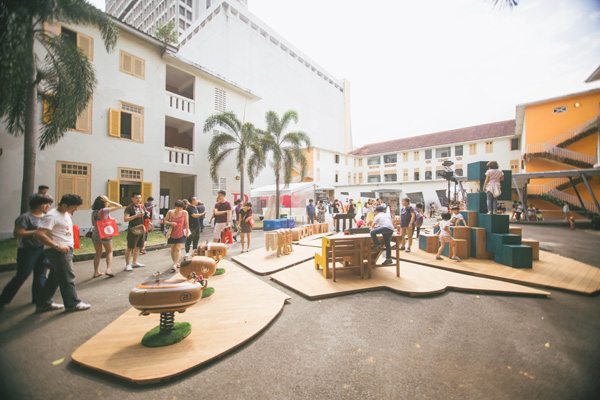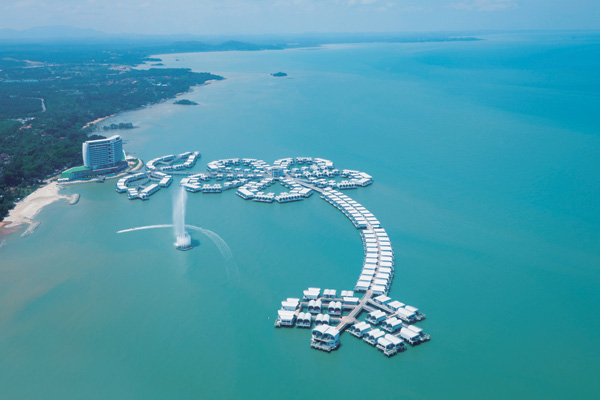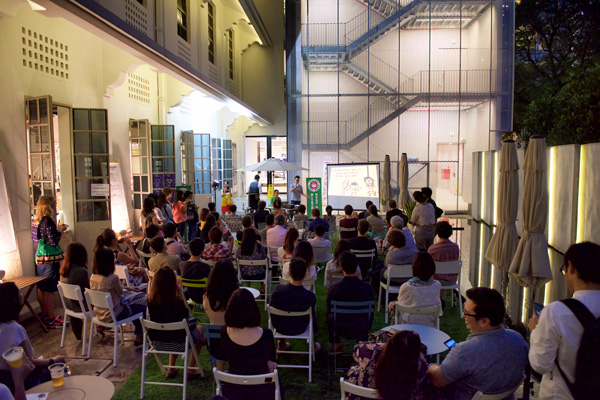The Design Masterplan Committee (DMC) has launched Design 2025 – Singapore by Design, a report documenting five strategic thrusts created to propel Singapore design to the next level.

March 16th, 2016
Top image: SingaPlural 2015
A masterplan that outlines the upcoming stages of development for design in Singapore has been released. Design 2025 – Singapore by Design notes five strategic thrusts that looks at assisting the design industry in local and global expansion, as well as the strengthening of the ecosystem from education to business sectors. All in all, promoting Singapore as a “thriving innovation-driven economy and a lovable city by design.”
The report was unveiled by the Design Masterplan Committee (DMC) – tasked by the Ministry of Communications and Information (MCI) to devise the strategies in May 2015. The DMC consists of 16 members, including 6 leaders from various fields of the design industry and 5 members from design-driven businesses.
Members from the design industry include Mr Tai Lee Siang, Group Managing Director of ONG&ONG Singapore; Mr Simon Ong, Group Managing Director / Co-founder of Kingsmen Creatives; Mr Chris Lee, Founder and Creative Director of Asylum; and Mr Peter Overy, Managing Director of IDEO Singapore.
During the media conference, Dr Beh Swan Gin, chairman of the DMC and Singapore Economic Development Board (EDB) stressed that design will play an increasingly vital role in addressing and solving the challenges faced in society today and in future.
Dr Beh added that the EDB has been expanding its scope to not only attract businesses to Singapore, but to work with companies here to create new business opportunities for design firms. He says, “The fact that more multinational companies have very significant Asia headquarters here means that a lot of the big clients and decision makers are physically here, which provides great opportunity for our design firms to achieve a track record necessary for them to go out internationally.”

POG: Pod Off-Grid by Pomeroy Studio Pte Ltd
A total of 15 recommendations were made by the DMC. They are grouped according to the five strategic thrusts summarised below:
1. Infuse design into our national skill set
The DMC recognises the importance of unique user experience to create a powerful product or service. To that end, designs needs to be infused as a national skill set to build a workforce with adept knowledge and skills.
Propositions include cultivating creativity and design foundation from pre-school, all the way to the tertiary level to create a multidisciplinary workforce. Continual professional development is also vital, alongside accreditation programmes to ensure high industry standards to attract businesses and consumers to invest in local design.

Prototyping for Kids (Strawbees) by OneMaker Group
2. Expand the role of design in businesses and government
Some of the recommendations in this step include the improvement of policy-making and the delivery of public services. For instance, a Design Promotion Unit could unite the efforts and resources of economic agencies to support the adoption of design by Singapore-based companies.
The knowledge and practice of design thinking should be increased amongst public servants to enable better policy-making and the delivery of public services. The DMC also proposes a refinement of the procurement framework and pre-qualifying design service providers across government agencies, such as the improvement of tender processes, or the practice of providing fair compensation to shortlisted tenderers for their time and effort.
3. Strengthen the competitiveness of design firms
This thrust addresses the issue that most design firms are micro-SMEs who suffer from the lack of scale. It aims to encourage firms to create “proprietary products and services, and intellectual property” through the assistance of DesignSingapore Council (DSG).
One method is to create a Business Centre at the National Design Centre that would provide access to shared services for design firms, such as Public Relations, Human Resources or Intellectual Property Management.
The DSG may also explore arrangements with overseas partners, or hot-decking facilities to allow local firms to go international. Finally, a digital database of design practitioners, craftsmen, suppliers or related service providers will serve as a convenient and efficient resource across sectors.

Pecha Kucha Night Singapore, Singapore Design Week 2015
4. Bring design into the community
The fourth thrust details the cultivation of design appreciation amongst the general public to support the design ecosystem. This includes outreach activities in the communities, equipping citizens with the know-how to co-create better living experiences through design, and evolving Singapore as a ‘living design museum’.
5. Develop the Singapore Design brand
Besides being known as safe, clean, efficient and reliable, Singapore needs to be known as a creative city. This has been identified as a ‘soft’ approach in establishing emotional connections worldwide.
This includes curating Singapore pavilions in major fairs and design shows; positioning Singapore Design Week as a premier international design festival; and extending the President’s Design Award and SG-Mark regionally.
A searchable and comprehensive guide for specifying leading products and their suppliers
Keep up to date with the latest and greatest from our industry BFF's!

Suitable for applications ranging from schools and retail outlets to computer rooms and X-ray suites, Palettone comes in two varieties and a choice of more than fifty colours.

Sub-Zero and Wolf’s prestigious Kitchen Design Contest (KDC) has celebrated the very best in kitchen innovation and aesthetics for three decades now. Recognising premier kitchen design professionals from around the globe, the KDC facilitates innovation, style and functionality that pushes boundaries.

Channelling the enchanting ambience of the Caffè Greco in Rome, Budapest’s historic Gerbeaud, and Grossi Florentino in Melbourne, Ross Didier’s new collection evokes the designer’s affinity for café experience, while delivering refined seating for contemporary hospitality interiors.

To be housed in the 1460 armoury building Sale d’Armi in Arsenale, Venice, this year’s Singapore Pavilion responds to the 18th International Architecture Exhibition’s theme — The Laboratory of The Future — but taking the form of a giant evolving machine that seeks to understand our true desires for how we live in the city.
The internet never sleeps! Here's the stuff you might have missed

Set to undergo a $60-million revitalisation, the National Gallery of Australia has announced the launch of a landscape design competition for its Sculpture Garden.

Continuing our new series on the design enthusiasts who work in all sorts of different roles across the industry, we speak to Rogerseller’s Claire Drummond.